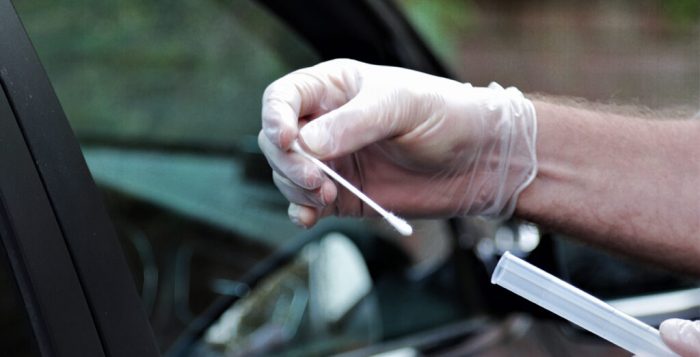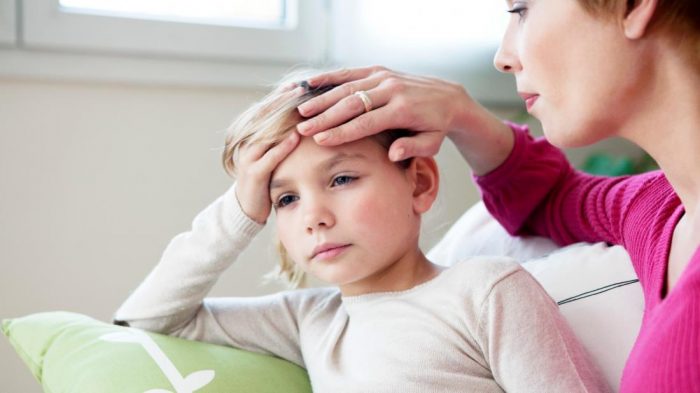Epilepsy is relatively common in children. Many children with epilepsy will outgrow the condition before their teens, and, if not, treatments usually ensure a full and healthy life.
In this article, we look at the signs and symptoms of epilepsy in childhood, plus the different types of seizures and syndromes. We also discuss the treatment options for children with the condition.
Epilepsy and children
Epilepsy causes seizures that begin in the brain. It is a neurological condition that almost 3 million people experience in the United States, 470,000Trusted Source of whom are under 17 years of age. Often, adults with epilepsy have their first seizure in childhood or adolescence.
The Epilepsy Foundation estimate that two-thirds of children with epilepsy outgrow seizures by the time they reach their teens. Most children can eliminate seizures and prevent side effects with an organized system of care.
A doctor may diagnose epilepsy in a child if an individual has had one or more seizures that another condition did not cause. Seizures are more likely to occur during the first year of life.
Epilepsy affects each child differently, depending on their age, the type of seizure they have, how well they respond to treatment, and any other existing health conditions.
In some cases, medication can easily control seizures while other children may experience lifelong challenges with seizures.
Types and symptoms
There are different types of epileptic seizures and various epilepsy syndromes.
The two main types of seizures are focal seizures and generalized seizures.
Focal seizures
Also known as partial seizures, focal seizures affect only one side of the brain. Before a focal seizure, a child experiences an aura that signals a seizure is coming. The aura is the beginning of the seizure.
Auras may include:
- changes in hearing, vision, or smell
- unusual feelings, such as fear, euphoria, or a sense of déjà vu
Focal aware seizures only involve one spot or one side of the brain. These seizures typically affect a specific muscle group, such as in the fingers or legs, and do not involve a loss of consciousness.
The person having a focal aware seizure may appear “frozen” and unable to respond but can usually hear and understand things going on around them. Other symptoms include nausea, pale skin, and sweating.
Focal impaired awareness seizures typically cause a loss of consciousness or awareness of the surroundings. Symptoms include crying, laughing, staring, and smacking the lips.
Generalized seizures
Generalized seizures affect both sides of the brain and usually cause a loss of consciousness. Children are typically sleepy and tired after the seizure. This latter effect is called the postictal state.
According to the Epilepsy Foundation, types of generalized seizures include:
- Absence seizures, also called petit mal seizures, cause a very brief loss of consciousness. The child may stare, blink rapidly, or have facial twitching. They are most common in ages 4–14 and usually lasts less than 10 seconds. Children with absence seizures typically do not have a postictal state.
- Atonic seizure. During an atonic seizure, a child experiences a loss of muscle tone that comes on suddenly. They may fall down or become limp and stop responding. They usually last less than 15 seconds. These are also called drop seizures.
- Generalized tonic-clonic seizure (GTC). A GTC, or grand mal seizure, has phases. A child’s body and limbs will first contract, then straighten, and then shake. The muscles will then contract and relax. The final stage is the postictal period, where the child will be tired and confused. GTCs usually begin in childhood and last 1–3 minutes.
- Myoclonic seizure. This type of seizure causes sudden jerking of the muscles. Myoclonic seizures usually last 1 or 2 seconds, and many can occur in a short time. People with brief myoclonic seizures do not lose consciousness.
Childhood epilepsy syndrome
If a child displays specific signs and symptoms, a doctor may diagnose them with a childhood epilepsy syndrome.
To make a diagnosis, the doctor will take into account:
- the type of seizures
- the age of onset
- the findings of an electroencephalogram (EEG) that measures brain activity
The different kinds of epilepsy syndromes include:
Benign rolandic epilepsy of childhood
This syndrome can occur between 3 and 10 years of age. It affects 15% of children with epilepsy. Children may have focal seizures at night, which can develop into a GTC.
Rarely, children may have seizures during wakefulness, and these seizures usually involve twitching of the face and tongue. Children may stop having seizures by 16 years of age.
Childhood absence epilepsy
Affecting up to 12% of under 16s with epilepsy, this syndrome begins between 4 and 10 years of age. Up to 90% of children with the condition stop having seizures by the age of 12.
Because absence seizures are so brief, caregivers may not notice that a child is having one.
Infantile spasms
Also known as West syndrome, infantile spasms usually begin before a child is 1 year old. The syndrome causes brief spasms or jerking in one or more parts of the body. The spasms occur in clusters.
Infantile spasms can affect infants who have had a brain injury, and many children with the syndrome have learning difficulties or behavioral problems. They may also develop another epilepsy syndrome known as Lennox-Gastaut syndrome.
Juvenile myoclonic epilepsy
Beginning between 12 and 18 years of age, juvenile myoclonic epilepsy causes different types of seizures, including myoclonic seizures, tonic-clonic seizures, and absence seizures.
Flashing lights can trigger these seizures, or they may occur shortly after waking up.
Juvenile myoclonic is the most common generalized epilepsy syndrome. It often continues into adulthood, but it may become less severe, and medication can control the seizures in up to 90% of cases.
Landau-Kleffner syndrome
This syndrome, known as LKS, is a rare childhood disorder that typically begins between 3 and 7 years of age. It causes difficulties in understanding language and verbal expression. Children with LKS may also have behavior problems.
Approximately 70% of children with LKS have obvious seizures, which are usually focal.
Lennox-Gastaut syndrome
The typical onset of Lennon-Gastaut syndrome is between 3–5 years of age, although some people do not develop it until adolescence. It can cause several different types of seizures. Many children also have learning and behavior problems.
This syndrome can be challenging to treat, and seizures often continue into adulthood.
Temporal lobe epilepsy
The Epilepsy Foundation say temporal lobe epilepsy is the most common form of focal epilepsy, affecting 6 in 10 of those with focal epilepsy.
Symptoms usually occur between 10 and 20 years of age, but it can develop at any time.
How to identify seizures
Epilepsy affects each child differently. Recognizing a seizure can be challenging, especially in very young children, or in children who cannot communicate what is happening.
Identifying a seizure depends on many factors, including the age of the child and the type of epilepsy or seizure they have. Absence seizures, for example, are very easy to miss, whereas GTC seizures are much easier to identify.
Parents and caregivers should watch for when older children appear absent at inappropriate times, such as in the middle of playing, eating, or having a conversation.
Periods of rapid blinking, staring, or confusion can also indicate a seizure. A sudden loss of muscle tone, which causes falls, is another clue.
In babies, the signs can be very subtle. Caregivers can look for times when the infant is showing:
- changes in breathing patterns
- unusual facial expressions, such as movements of the eyelids or mouth
- muscle movements, including jerks, bicycling of the legs, or episodes of stiffening
Loss of alertness or difficulty focusing the eyes are other symptoms of seizure in infants.
The symptoms of a seizure can be very similar to the symptoms of other health conditions. It is, therefore, necessary to see a doctor for a full evaluation and diagnosis.
Causes and triggers
Epilepsy has no identifiable cause in many people who develop the condition. Potential causes or contributing factors may include:
- developmental disorders, including autism
- genetics, as some types of epilepsy run in families
- high fevers in childhood leading to seizures, known as febrile seizures
- infectious diseases, including meningitis
- maternal infections during pregnancy
- poor nutrition during pregnancy
- oxygen deficiency before or during birth
- trauma to the head
- tumors or cysts in the brain
Certain factors can trigger a seizure in those with epilepsy. Common triggers include:
- excitement
- flashing or flickering lights
- lack of sleep
- missing a dose of antiseizure medication
- in rare cases, music or loud noises, such as church bells
- skipping meals
- stress
Diagnosis
It can be difficult to diagnose some forms of epilepsy in children, especially infants and young children.
To help the doctor make a correct diagnosis, caregivers should keep a detailed description of a child’s symptoms. It can also be helpful to take a video recording of the child during a seizure.
A doctor will usually diagnose epilepsy when more than one seizure occurs, and where there is no apparent reason for it, such as fever or trauma.
Steps to diagnosis include:
- a complete medical and family history
- details of the seizure
- physical examination
- blood tests
- brain scans and measurements, including a CT scan, MRI scan, and electroencephalogram (EEG)
After a child receives an epilepsy diagnosis, their caregivers and doctor have to work together to determine the types of seizures the child has and what kind of epilepsy they have. These factors help inform treatment.
Treatment
Treatment options for epilepsy in children include:
Medications
Most people with epilepsy require antiepileptic drugs to control their symptoms. These medicines may stop seizures from happening, but they are not a cure, and they cannot stop a seizure once it has begun.
Many children do not require medication for the rest of their lives. Caregivers of children who have been seizure-free for several years should speak to their doctor about the possibility of reducing or coming off medication.
People should not stop treatment without medical consultation, as seizures may come back or get worse.
Antiepileptic drugs do not control seizures in all children. In these cases, other treatments may be necessary.
Ketogenic diet
If medications are not sufficient, some children may be able to try a ketogenic diet, or “keto diet,” to control their seizures. It is essential to work with a doctor and dietician when putting a child on a keto diet.
Neurostimulation
If epilepsy does not respond to drugs, a doctor may recommend neurostimulation. In this therapy, a device sends small electric currents to the nervous system.
There are currently three types of neurostimulation for epilepsy treatment:
- vagus nerve stimulation
- responsive neurostimulation
- deep brain stimulation
Surgery
In some cases, specific children can have surgery to remove a portion of the brain. These surgeries may prevent or reduce seizures.
Outlook
The outlook for epilepsy in children varies, depending on the child and the type of epilepsy they have.
With treatment, most children and adults with epilepsy live full lives. Recent improvements in epilepsy treatment mean the condition is much more manageable now than ever before.
The Epilepsy Foundation estimates that one-third of children with epilepsy may outgrow seizures before they reach their teenage years. This is known as spontaneous remission. For other people, the seizures may become less frequent or less severe as they age.
Children with severe epilepsy syndromes may need extra support, especially if they also have learning and behavior difficulties.






